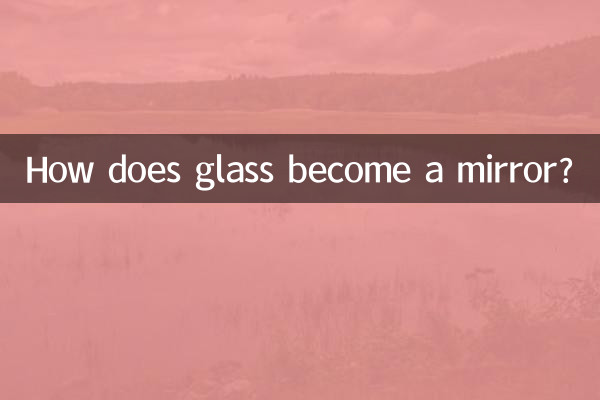How glass becomes a mirror: a comprehensive analysis from materials to technology
Mirrors are indispensable items in our daily lives, but have you ever wondered how ordinary glass becomes a mirror? This article will combine the hot topics and hot content in the past 10 days to analyze the whole process of turning glass into a mirror from multiple perspectives such as materials, processes, and markets.
1. The basic principle of turning glass into a mirror

The core of turning glass into a mirror lies in the reflective layer on its surface. By coating the back of the glass with a highly reflective metal (usually silver or aluminum), the glass gains the ability to reflect light, thus becoming a mirror. Here are the key steps in this process:
| step | describe |
|---|---|
| 1. Glass cleaning | Remove impurities and stains from the glass surface to ensure uniform adhesion of the coating |
| 2. Silver plating or aluminum plating | Chemically or physically depositing a metal layer on the back of the glass |
| 3. Protective coating | Apply protective paint to the metal layer to prevent oxidation and scratching |
2. Hot Topic: Technical Innovation of Mirrors
In the past 10 days, discussions on mirror technology have mainly focused on the development of smart mirrors and environmentally friendly mirrors. The following are relevant hot topics:
| topic | content |
|---|---|
| smart mirror | Combined with AI technology, the mirror can display weather, news and even health data |
| Eco-friendly mirror | Use lead-free processes and recyclable materials to reduce environmental impact |
| nanomirror | Using nanotechnology to improve mirror reflectivity and durability |
3. Market data: Current status of the mirror industry
According to recent market research data, the mirror industry shows the following trends:
| index | data |
|---|---|
| global market size | Reaching US$45 billion in 2023 |
| annual growth rate | 5.2% (2020-2023) |
| Main application areas | Home decoration, automotive, electronic equipment |
4. Detailed process of turning glass into mirror
The following is the specific process flow for turning glass into a mirror:
| Craftsmanship | illustrate |
|---|---|
| chemical silver plating | A silver layer is deposited on the glass surface through the chemical reaction of silver nitrate and reducing agent. |
| Vacuum aluminum plating method | Aluminum is evaporated and deposited on the glass surface in a vacuum environment |
| Magnetron sputtering | Use high-energy particles to bombard the target and sputter metal atoms onto the glass surface |
5. Future Prospects: Innovation Direction of Mirror Technology
With the development of science and technology, mirror technology is also constantly innovating. The following are possible future directions:
Through the above analysis, we can see that turning glass into a mirror is not only a simple process, but also a comprehensive application of materials science, chemistry and physics. As technology advances, mirrors will play an important role in more areas.

check the details

check the details